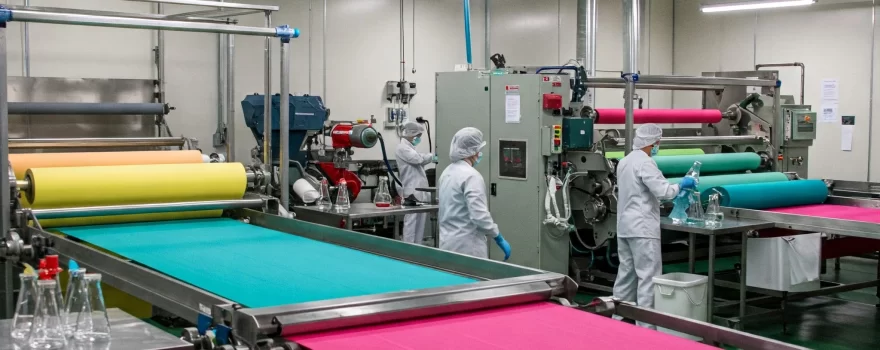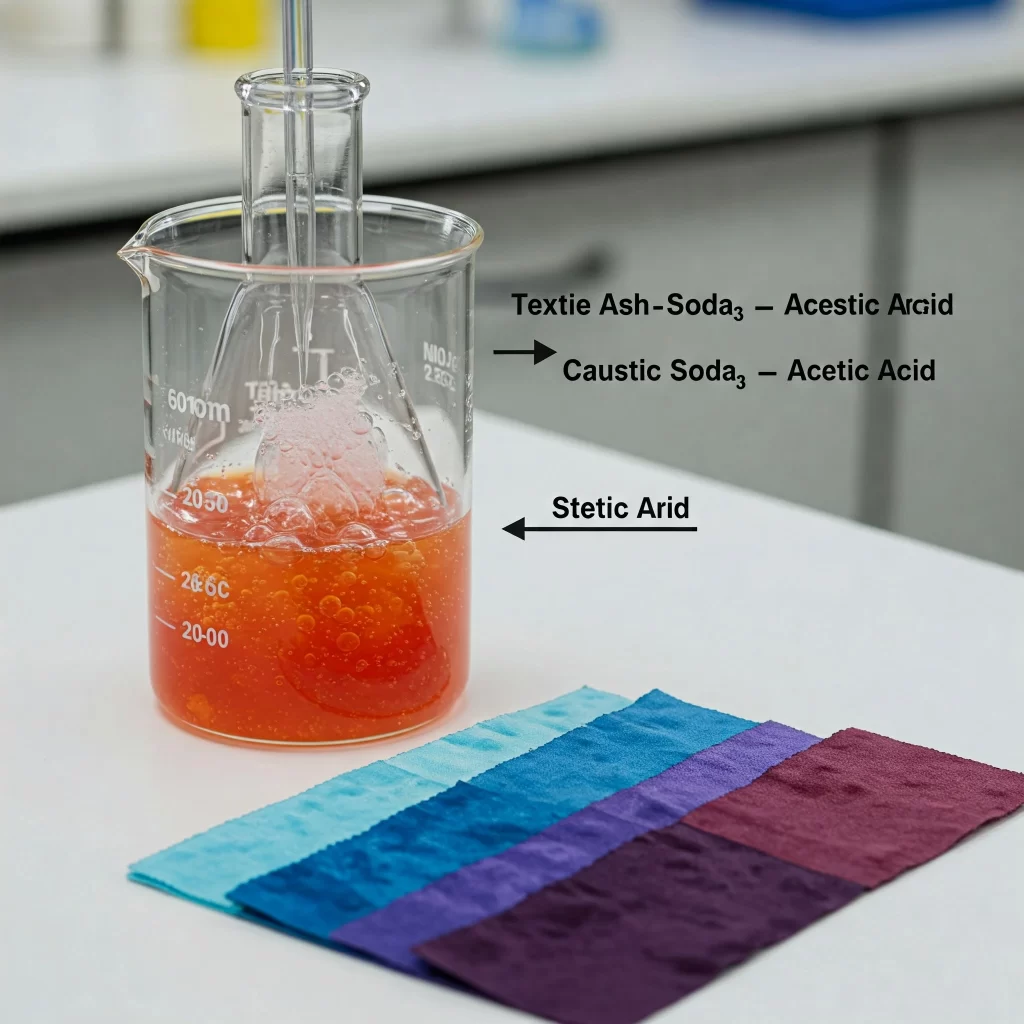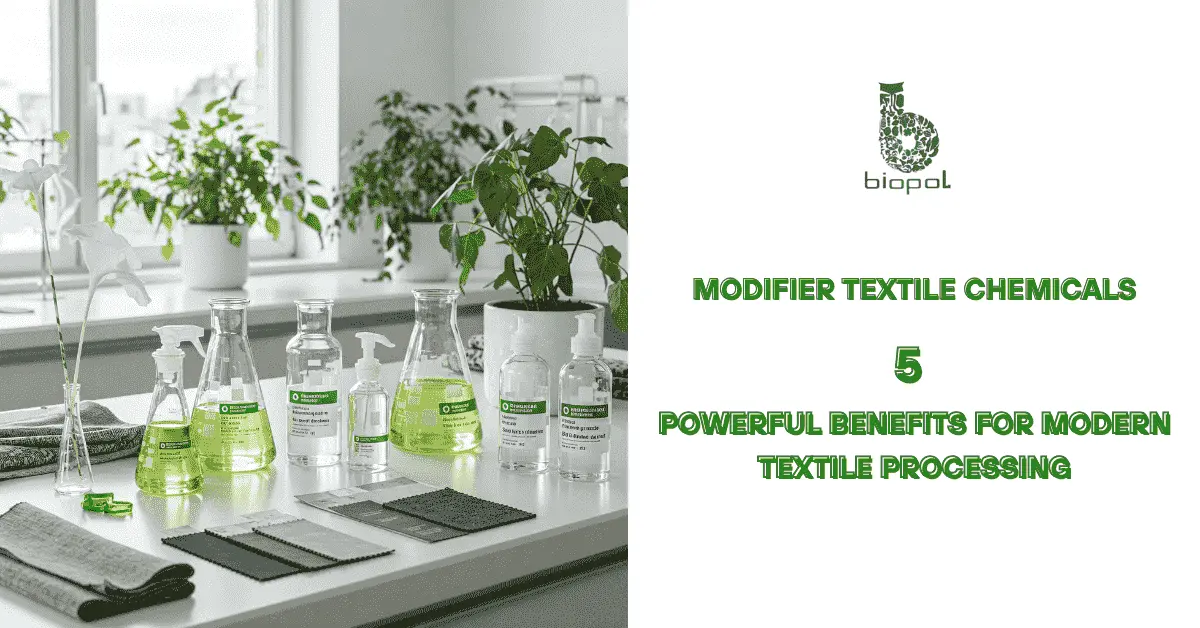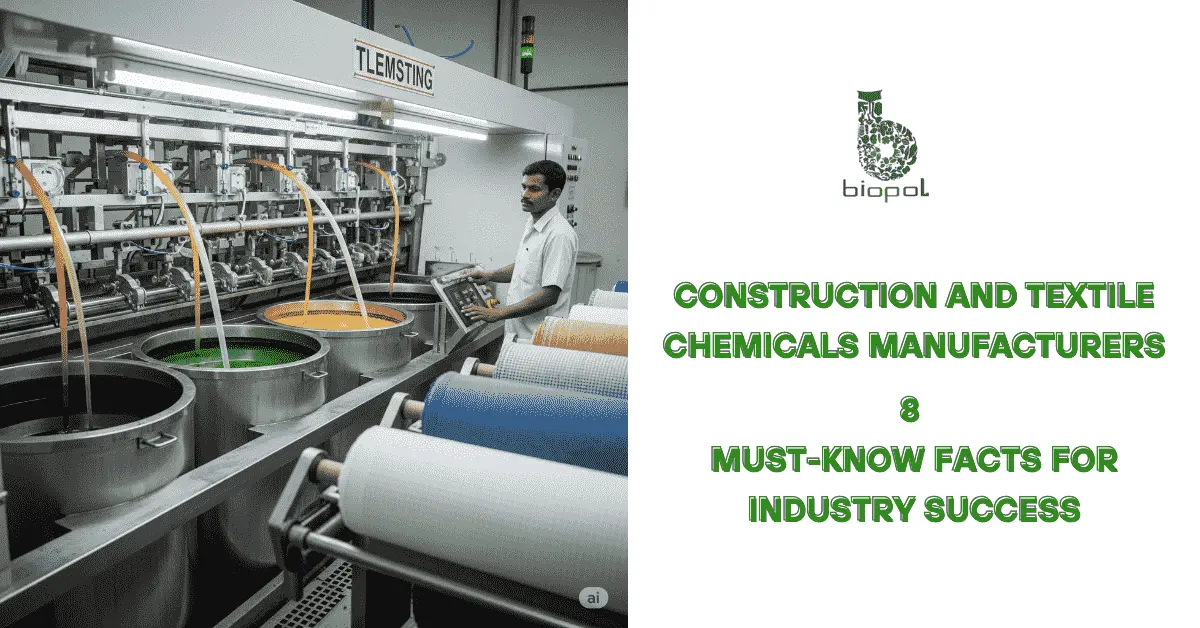
Textile chemicals play a pivotal role in India’s expanding textile industry. The industry’s growth necessitates a consistent supply of high-grade chemicals to maintain production standards. It is also essential for buyers to prioritize quality when they Buy Textile Chemicals in India. Substandard chemicals can lead to compromised fabric integrity, color inconsistency, and operational inefficiencies. Therefore, the selection of reliable suppliers offering premium textile chemicals is crucial for businesses aiming to remain competitive. The increasing demand for top-tier products reflects the industry’s commitment to excellence.
Table of Contents
Key Factors to Buy Textile Chemicals in India
In the procurement of textile chemicals within the Indian market, a comprehensive understanding of functional applications is paramount. This discussion aims to provide clarity by delineating key considerations, so you can build a sturdy supply chain.
Procuring Textile Chemicals in India
When sourcing textile chemicals in India, strategic procurement hinges on supplier credibility, product performance, ecological impact, and economic efficiency.
| Factor | Key Considerations |
| 1. Supplier Evaluation | – Legal Standing: Verify business licenses and registration. |
| – Corporate Transparency: Assess website professionalism and confirm physical address. | |
| – Certification Validation: Prioritize suppliers with ISO and industry-specific certifications. | |
| – Performance History: Conduct thorough background checks and review industry feedback. | |
| – Operational Assessment: Factory audits provide direct insight into manufacturing and quality control. | |
| 2. Product Performance and Compatibility | – Expert Consultation: Engage textile professionals to determine optimal chemical selections. |
| – Performance Validation: Rigorous sample testing ensures adherence to performance criteria. | |
| – Compositional Integrity: Confirm chemical purity and precise composition. | |
| – Process Compatibility: Validate chemical compatibility with fabric types and processing methodologies. | |
| – Consistency Assurance: Secure suppliers who guarantee consistent product quality and delivery. | |
| 3. Ecological Responsibility | – Sustainable Alternatives: Favor suppliers who offer low-VOC and biodegradable chemicals. |
| – Regulatory Adherence: Ensure compliance with Restricted Substance Lists (RSLs) and industry regulations. | |
| – Sustainable Practices: Support suppliers committed to environmentally responsible manufacturing. | |
| – Certification Verification: Prioritize GOTS and similar certifications for environmental and social accountability. | |
| 4. Economic Efficiency | – Value-Driven Pricing: Evaluate total value, not just initial cost. Quality and reliability offset potential long-term expenses. |
| – Operational Cost Analysis: Factor in potential rework, waste, and downtime when assessing supplier proposals. | |
| – Value-Added Services: Leverage suppliers who offer customization, supply chain efficiency, and sustainability initiatives. |
Buy Textile Chemicals: India Options
When sourcing textile chemicals, you have several distinct purchasing avenues. Each presents its own set of advantages.
Direct from Manufacturers:
Engaging directly with producers can yield competitive pricing and the possibility of product customization. However, you must verify their production capabilities and quality control measures. We, at Biopol Chemicals Limited, have our MARKETPLACE for you to choose the best textile chemicals to buy. Take a look for some Steal-Deals today!!
Through Wholesalers:
Wholesalers offer bulk purchasing options, potentially leading to cost savings. They often maintain a broad product inventory. Verify their storage and handling practices.
Via Online Platforms:
Digital marketplaces provide expansive supplier access and price comparisons. Exercise due diligence. Confirm supplier legitimacy and request product samples.
From Authorized Distributors:
Distributors, acting as intermediaries, can offer localized support and a diverse product range. Seek distributors with established manufacturer relationships.

Choosing Textile Chemical Suppliers
Securing a dependable supplier is vital. It impacts your production quality and bottom line. Don’t leave it to chance. Here’s what to look for:
| Criterion | Key Considerations |
| Supplier Credibility | – Check their track record: How long have they been in business? Do they have a solid reputation? Look for testimonials and case studies. -Verify their legal standing. |
| Industry Experience | – Experience matters: A supplier with deep industry knowledge understands your needs. – They can provide valuable technical support and anticipate potential issues. |
| Product Quality | – Demand consistency: Request detailed product specifications and samples. – Conduct thorough testing. – Look for suppliers with robust quality control processes and relevant certifications. |
| Certification and Compliance | – Confirm ISO certifications and other industry-specific certifications. – Check for compliance with all local and international regulations. |
| Logistics and Delivery | – Reliable delivery schedules are essential. – Assess their logistics capabilities: Can they meet your deadlines? Do they offer flexible delivery options? |
| Customer Support | – Strong customer support is invaluable: Look for suppliers who offer prompt and responsive service. – Can they provide technical assistance? Do they handle inquiries efficiently? |
| Financial Stability | – A stable supplier is a long-term partner. – Verify their financial health to avoid supply chain disruptions. |
Buy Textile Chemicals in India: Pricing
Let’s talk money. You need quality chemicals, but you also need to manage costs. Here’s how to navigate the pricing landscape and secure the best deals.
Understanding Price Variations
Prices fluctuate based on factors like raw material costs, production volumes, and market demand.
Don’t assume the first price you get is the final one—it’s important to compare quotes from multiple suppliers.
Understand the factors driving price variations to better negotiate and plan your purchasing strategy.
Bulk Purchasing Advantages
Plan your inventory carefully to maximize savings and avoid overstocking or shortages.
If you have consistent demand, bulk purchasing is a smart approach.
Buying in bulk can often lead to significant cost savings as suppliers typically offer discounts for larger orders.
Negotiation Tactics
Consider factors like payment terms and delivery schedules during your negotiations to secure favorable terms.
Negotiation is key to getting the best deal. Don’t hesitate to ask for discounts.
Build relationships with suppliers over time. Long-term partnerships can often lead to better pricing.
Value Beyond Price
Don’t focus solely on the lowest price. While cost is important, you should also consider the total cost of ownership.
This includes not just the product price, but also product quality, reliability, and the level of supplier support you receive.
A cheap product that causes production delays or requires frequent replacements may end up costing you more in the long run.
Regular Market Analysis
Regular market analysis will help you make more informed decisions and possibly take advantage of price fluctuations.
Chemical prices change regularly, so it’s important to keep an eye on market trends.
Contract Negotiation
Contracts can help lock in set prices and guarantee a steady supply of chemicals, ensuring stability and preventing price hikes.
For consistent purchasing, negotiating contracts with suppliers can be very useful.

Buy Textile Chemicals in India: Informed Procurement
The Indian textile chemical market demands strategic acumen. You now know how to deal with it successfully. Price is a factor, not the sole determinant. Prioritize quality, sustainability, and supply chain reliability.
Key Considerations to Buy Textile Chemicals in India
Supplier Validation: Select partners with demonstrable credibility and extensive industry expertise.
Quality Assurance: Mandate rigorous product testing and certification to meet stringent standards.
Sustainable Practices: Integrate eco-friendly alternatives to secure future market relevance and enhance brand equity.
Cost Optimization: Employ bulk purchasing and strategic negotiation to maximize economic efficiency.
Supplier Partnerships: Cultivate robust supplier relationships, emphasizing responsive customer support.
Your choice of textile chemicals directly influences product integrity, operational efficacy, and market perception. Therefore, align with suppliers who share your commitment to excellence and sustainability.
Conclusion
Conduct comprehensive supplier due diligence. Acquire and evaluate product samples and specifications. Analyze sustainability practices and certifications. Negotiate favorable terms, encompassing cost and logistics. Establish contact with reputable suppliers to solidify your supply chain. By implementing these measures, you will secure a supply chain that bolsters long-term success and reinforces your dedication to quality and environmental responsibility. This is the way to Buy Textile Chemicals in India.
Visit BIOPOL E-SHOP today for amazing Seal Deals!!!
Also Read: Textile Chemicals: The Secret Sauce Behind Your Clothes

